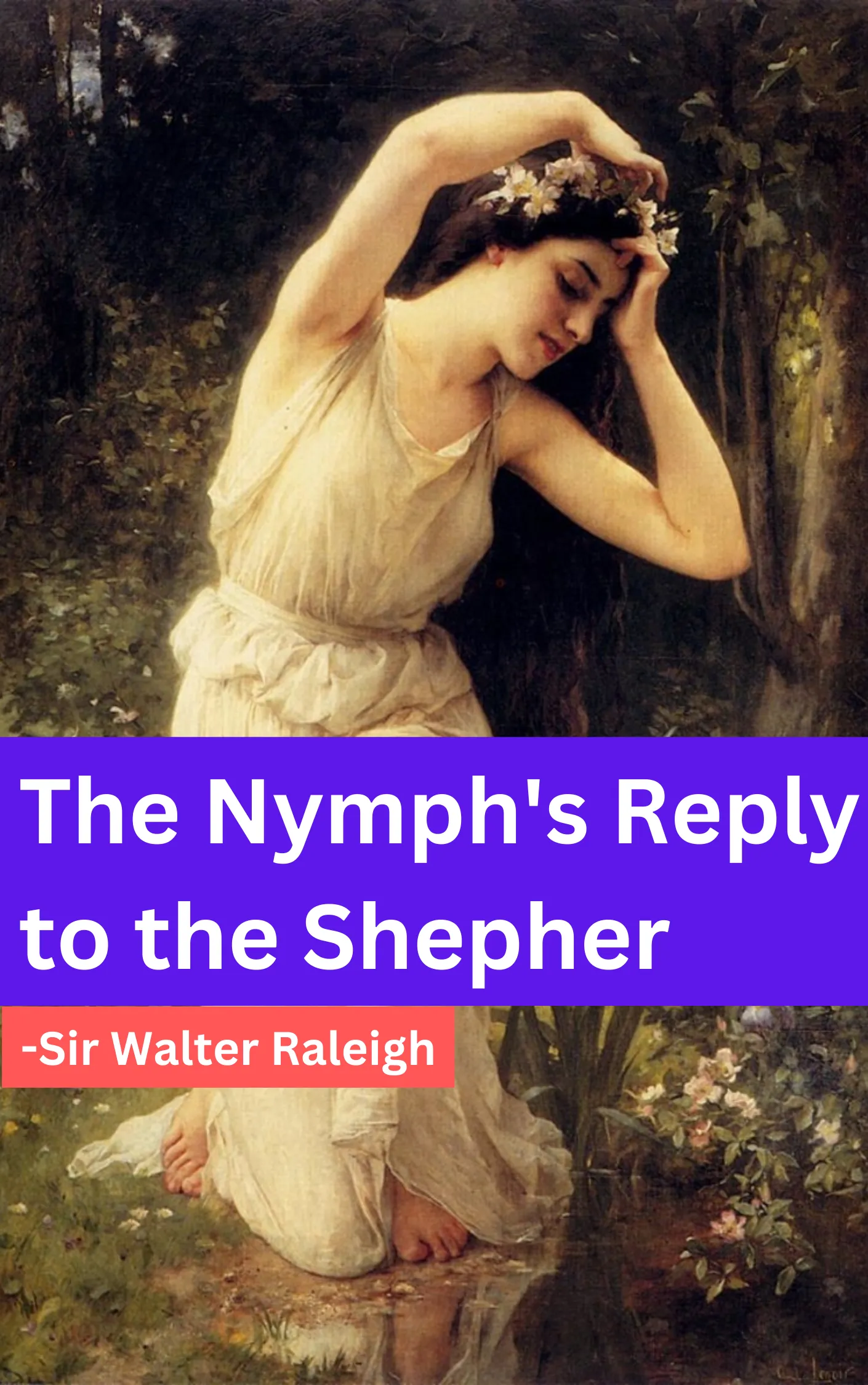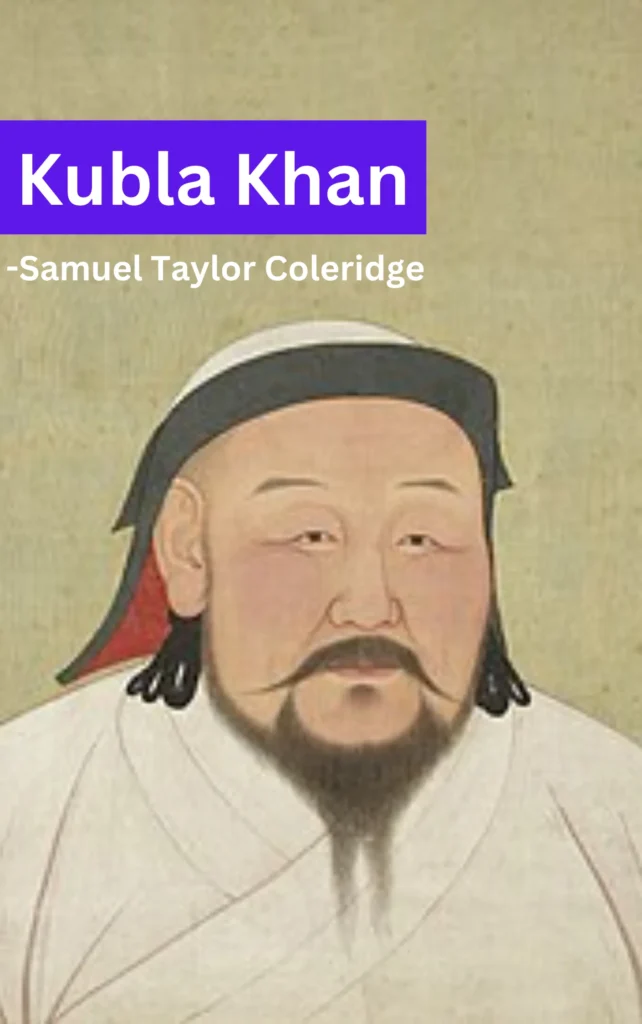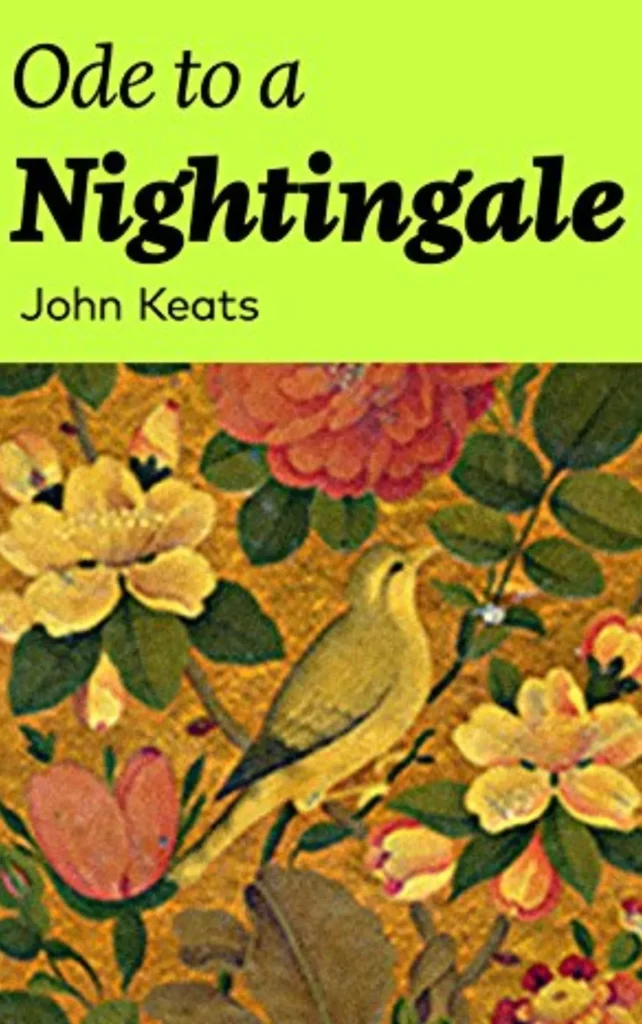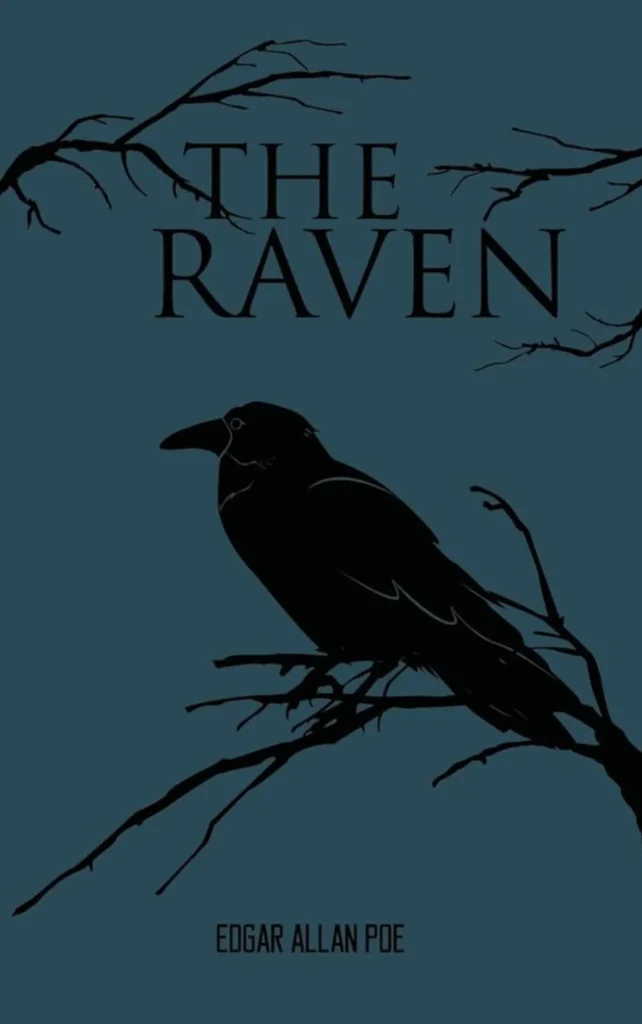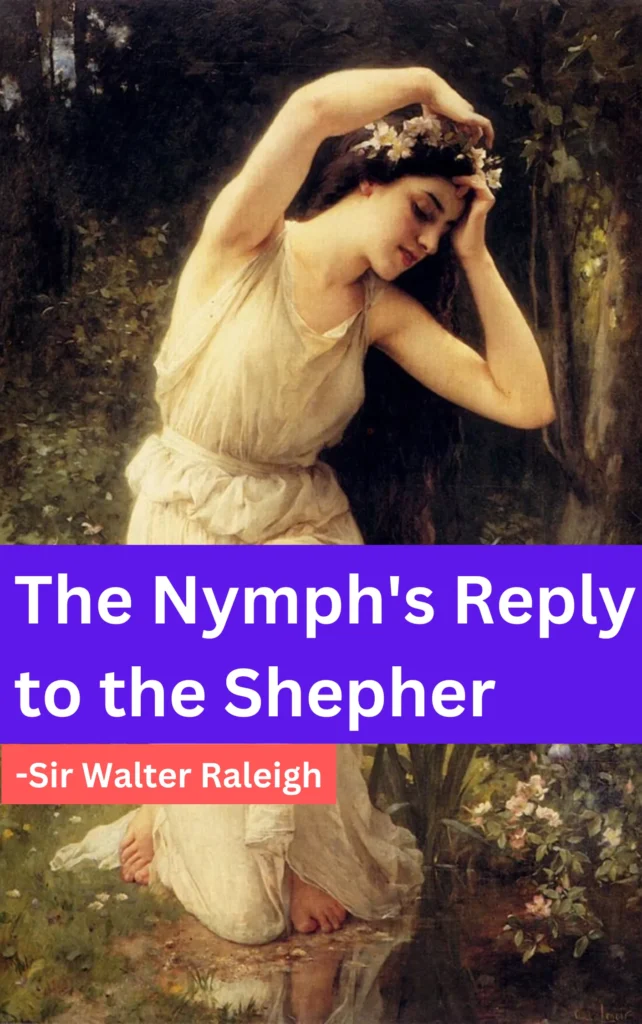
About Poem: The Nymph’s Reply to the Shepherd
| Poem Title | The Nymph’s Reply to the Shepherd |
| Author | Sir Walter Raleigh |
| Date of Writing | Late 16th century (circa 1596) |
| Genre | Elizabethan pastoral poetry |
| Style | Response or reply to Christopher Marlowe’s poem “The Passionate Shepherd to His Love” |
| Form | A lyric poem with six quatrains (four-line stanzas) |
| Themes | Realism, skepticism, fleeting nature of pleasure, contrast to idealized love |
| Tone | Pragmatic, skeptical, and realistic |
| Key literary devices | Imagery, symbolism, and personification |
| Significance | A response to Marlowe’s romantic poem, offering a contrasting view of love and nature |
| Imagery | Contrasts rural idyllic scenes with the harsh realities of life |
| Key Lines | In Xanadu did Kubla Khan A stately pleasure-dome decree: Where Alph, the sacred river, ran Through caverns measureless to man Down to a sunless sea. |
Themes: The Nymph’s Reply to the Shepherd
The themes of “The Nymph’s Reply to the Shepherd” by Sir Walter Raleigh are:
- Transience of Love ➤ Love is fleeting and doesn’t last forever.
- Realism vs. Idealism ➤ Contrasts idealized pastoral visions with a more realistic view of life.
- Nature’s Inconstancy ➤ Nature is constantly changing, reflecting the impermanence of human desires and beauty.
- Skepticism ➤ The poem questions the promises and permanence of romantic ideals.
- Embrace the Present ➤ Encourages living in the moment and not being deluded by fleeting desires.
The Nymph’s Reply to the Shepherd Poem
If all the world and love were young,
And truth in every Shepherd’s tongue,
These pretty pleasures might me move,
To live with thee, and be thy love.
Time drives the flocks from field to fold,
When Rivers rage and Rocks grow cold,
And Philomel becometh dumb,
The rest complains of cares to come.
The flowers do fade, and wanton fields,
To wayward winter reckoning yields,
A honey tongue, a heart of gall,
Is fancy’s spring, but sorrow’s fall.
Thy gowns, thy shoes, thy beds of Roses,
Thy cap, thy kirtle, and thy posies
Soon break, soon wither, soon forgotten:
In folly ripe, in reason rotten.
Thy belt of straw and Ivy buds,
The Coral clasps and amber studs,
All these in me no means can move
To come to thee and be thy love.
But could youth last, and love still breed,
Had joys no date, nor age no need,
Then these delights my mind might move
To live with thee, and be thy love.
Watch Full Poem Summary on YouTube
The Nymph’s Reply to the Shepherd Summary & Analysis
The Nymph’s Reply to the Shepherd” is a pastoral poem written by Sir Walter Raleigh’s contemporary, Sir Christopher Marlowe. It serves as a response to Raleigh’s poem, “The Passionate Shepherd to His Love.” Marlowe’s poem offers a contrasting perspective on the themes of love, nature, and time.
Stanza 1
In the first stanza, the nymph immediately dismisses the romantic promises made by the shepherd in Raleigh’s poem. She emphasizes that if everything in the world were static, she might entertain his proposals. However, she knows that the natural world is constantly changing, and the beauty he describes will not last forever.
Stanza 2
The nymph continues to counter the shepherd’s idealized vision of their future. She argues that the lush, green groves he speaks of will eventually wither. She mentions that while youth may be a time of pleasure, it doesn’t last long, and beauty fades with time. The harsh realities of mortality and the transience of human desires are central to this stanza.
Stanza 3
The nymph discusses the impermanence of worldly pleasures. She asserts that the shepherd’s vision of an idyllic life is unrealistic. The shepherd’s wealth of pleasures might bring temporary joy, but it will be followed by sorrow and regrets.
Stanza 4
In this stanza, the nymph reflects on the idea that love itself is transient. She acknowledges that while the shepherd’s love is genuine at the moment, it will eventually wane. She warns him not to be deluded by the fleeting nature of love and passion.
Stanza 5
The nymph turns her attention to the topic of time and the inexorable passing of seasons. She points out that spring, the season of budding love, will eventually give way to winter. The image of the flowers fading symbolizes the ephemeral nature of love and beauty.
Stanza 6
The final stanza expresses the nymph’s concluding thoughts. She suggests that if everything were as permanent as the shepherd imagines, she might accept his proposal. However, she knows that both nature and human experiences are marked by change and transience. The poem ends with the idea that the shepherd should enjoy the present moment while it lasts.
FAQs: The Nymph’s Reply to the Shepherd
What is the meaning of the nymph reply to the shepherd?
The nymph’s reply to the shepherd in the poem is that she will not accept his offer of love and marriage because she knows that all things fade and die over time.
What is the moral lesson of the nymph’s reply to the shepherd?
The moral lesson of the poem is that material possessions and physical beauty are fleeting, and that true love should be based on deeper qualities such as character and intelligence.
Why does the nymph reject the shepherd?
The nymph rejects the shepherd because she doesn’t want things that are temporary, like flowers and clothes. She wants things that will last, like true love.
What is the irony in the nymph’s reply to the shepherd?
The irony is that the nymph uses the shepherd’s own arguments about the fleeting nature of beauty and pleasure to reject his advances.
Did the nymph accept the love of the shepherd?
No, the nymph did not accept the love of the shepherd in the poem
What are three gifts the shepherd promises to provide for the nymph?
The three gifts are:
–Clothes made of flowers and wool, gold and coral.
–A belt of straw and ivy buds, with coral clasps and amber studs.
–A cap, kirtle, and posies.
Under what condition does the nymph say she would be the shepherd’s love?
The nymph says she would love the shepherd if the world was perfect and all men were honest and true.
What is the difference between the passionate shepherd to his love and the nymphs reply to the shepherd?
The shepherd is optimistic and passionate about love, while the nymph is realistic and skeptical. The shepherd uses vivid imagery to describe the beauty of nature and the joys of love, while the nymph reminds the shepherd that beauty fades and that love can change.
How can the shepherd convince her to become his love?
The nymph cannot be convinced to become the shepherd’s love because she is aware of the realities of life and the consequences of her actions. She knows that the shepherd’s promises are empty and that he is only interested in her for her beauty and her youth.
What does nymph from the heaven mean?
The nymph from the heaven is a metaphor for the natural world, which is beautiful but also fleeting and impermanent.

